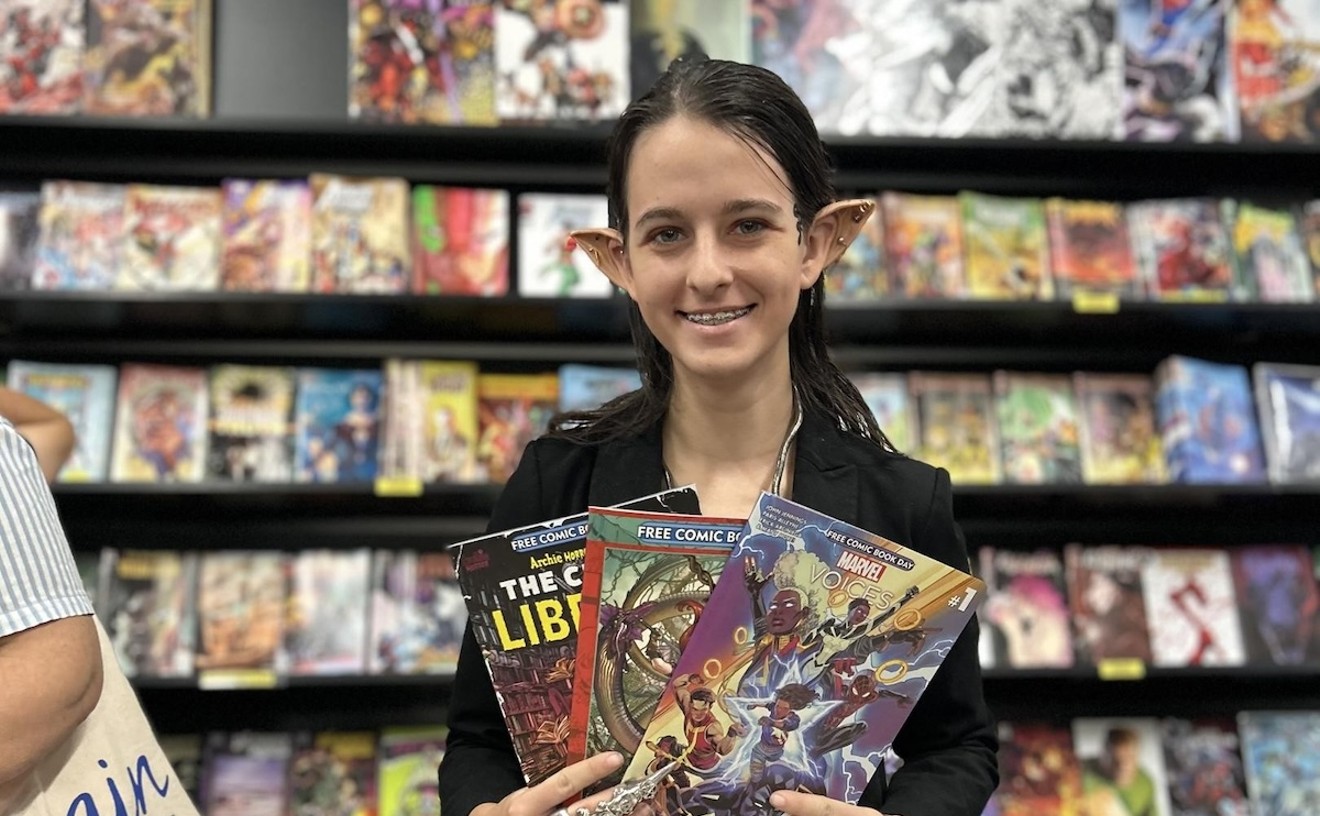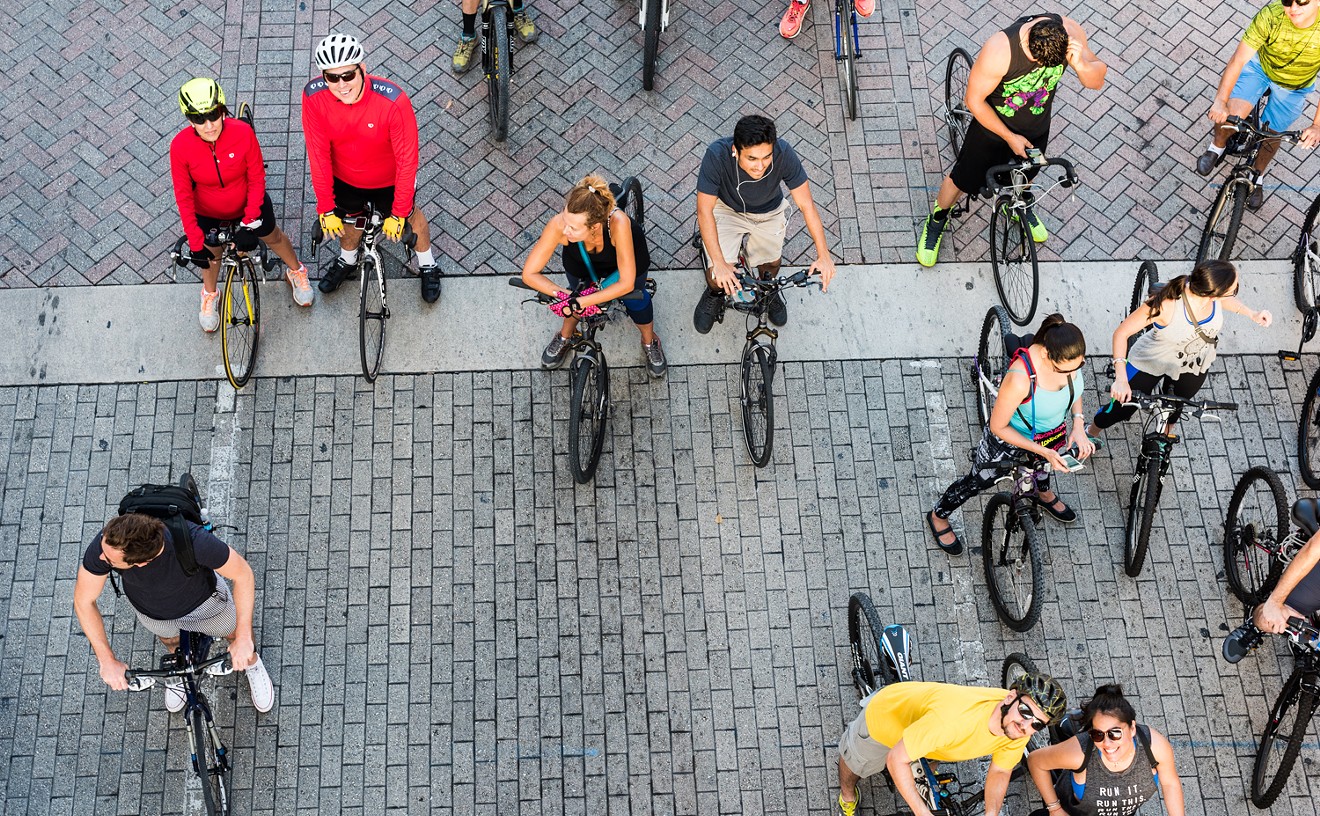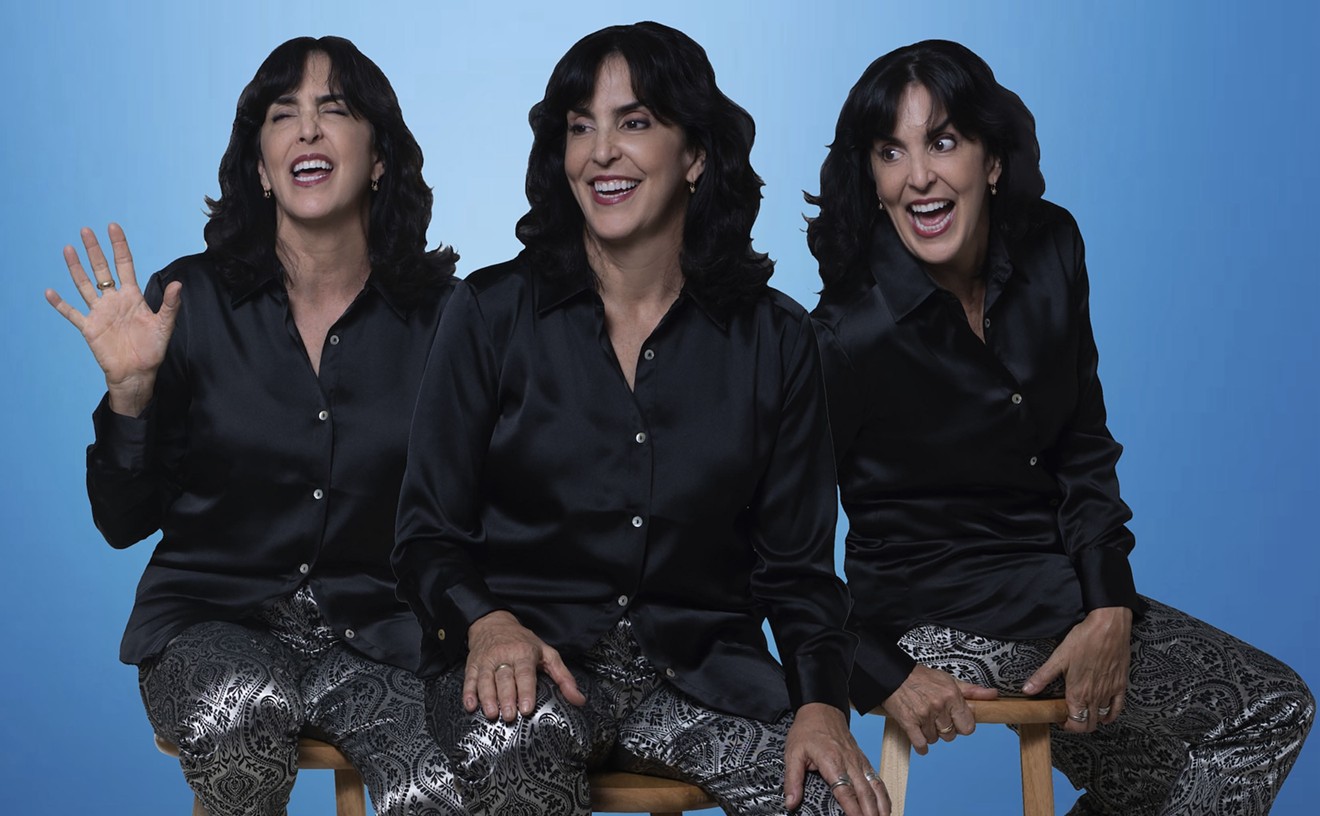It feels lazy to call Miami-based artist Jorge Enrique a mixed media artist. He blends image and sculpture so thoroughly it confounds the mind. Look deeper at his three-dimensional works hanging off of walls or stretching up from the ground and you will find elements of photography hidden beneath brush strokes. The form of these objects (a descriptor he sometimes uses in the titles of his works) also hearken back to a period when he dabbled in the study of architecture.
The work of this Cuban-born artist is painting, sculpture and architecture at once. It began simply enough, looking out upon the concrete landscape of Wynwood, the Miami neighborhood where Enrique has resided at various studio spaces for the past 15 years. It began with photographing mundane objects like manhole covers and consideration of "mankind's history in asphalt." Then it turned to monoprints of the street. With just paper and ink, he and a group of assistants would "lift" images from the ground on giant, 40-inch roles of monoprint. Then he would wash some of it away, silkscreen it and wrap it around blocks of wood, completely re-imagining the urban landscape of Wynwood. Primary colors of blue and yellow offer highlight in the predominately black, white and gray works.
See also: Pearl Paint Art Supply Store Recreated in Wynwood
He called it "urban D-constrution," and he has refined and rediscovered his approach over the years. His most recent works seem encased in a smooth, glossy, transparent shield. "I thought it would be interesting to do things that were anti-organic," he says, "anti-symmetric and radical in the sense of how it would occupy geometric space ... I wanted to find something that stood out on its own as a piece, so I started playing around with the idea of radicalized geometry because, with architecture, basically everything is geometry, but it is so far from being radical ... Sculpture, in a way, can explore radical geometry, but if you look at the past, that really hasn't been explored so much."
For some works, he constructs the pieces by cutting wood in a specific way that negates straight lines but are all about math. However, he notes, his work is far from mathematically planned out. As can be seen in the passionate, broad brush strokes of some of his work, it's about the accidents. It's about discovery in the method of art.
He will note Cy Twombly and Robert Rauschenberg as heroes but also speaks of the jazz artists Thelonious Monk and Miles Davis as important influences. He is, after all, improvising the works as he goes. "By negating all those things like geometry and all that they teach in school," he notes, "I got to this place that I think is far more interesting, although I cannot take credit in the sense of saying that this is what I set out to do. It's more a process of this is what I'm not going to do."
Born in Havana in 1960, Enrique came to Miami as a child when his parents fled political persecution by the Castro regime. After graduating from Miami High, he first tried to study a "practical" career in architecture at the University of Houston. The buildings he began concocting were appropriately impractical, so he soon turned to art and won a full-paid scholarship at the esteemed Alfred C. Glassell Jr. School of Art at the Museum of Fine Arts, Houston.
He graduated with a BFA and soon found himself with a career in art. Though he spent time in Los Angeles and New York, he returned to Miami in the mid-1990s and rediscovered his home, which he says is perfect for a Cuban-American exile. "It felt important to me to get back to my roots, to being Cuban-American," he notes. "But it really wasn't the main reason I returned. The main reason was that I landed here to visit some friends, and it was like November. The weather was killer and now Miami had changed considerably. The Miami that I left and the Miami I returned to was completely different. This city was buzzing with people from all over. To me, it had become more of a melting pot."
Miami also proved a great base to sell his work to Europe where there is great interest in his work. For the past 15 years he has been mostly selling his work overseas, where he also makes appearances in the media. Meanwhile, ironically, Miami hardly knows this Cuban exile. Now, Art Basel Miami Beach is in full effect, which keeps the artist extremely busy. "During Basel, I plan what is going to happen for the next 24 months because they all come to town," he says of his target patronage.
The French in particular have embraced him. His work is on display at the Bernard Magrez Cultural Institute in Bordeaux, La Fondation Villa Datris Museum in L'Isle-sur-la-Sorgue and is part of the public collection of the City of Angers, France. Enrique is represented by Waltman-Ortega Fine Art, a gallery in Wynwood that actually first began in Paris in 2006. "They are extremely professional," he says. "They are very committed to what they do. They're very knowledgeable."
Currently, Waltman-Ortega has a booth at the Art Miami Contemporary & Modern Art Fair and is showing Enrique's work in one of its rooms at its Wynwood location. Aliona Ortega, partner to Olivier Waltman, who founded the Paris location, offers a selection of the company in which Enrique is displayed. "This year, in our gallery in Wynwood, we have a group exhibition of works by several international artists. Select works by Jorge Enrique, part of his 'Permutations' solo project; sculptures by Joe Segal, an American sculptor, who, like Enrique, recently had a solo exhibition titled 'Aberration,' oil paintings by renowned French artist Francois Bard, realistic wood sculptures of ordinary objects that make our patrons do double takes by established French sculptor Christian Renonciat (who is the most recent addition to our roster of artists), whimsical and playful assemblages by NOART, a French artist/designer who likes to play with LED lighting and mirrors."
Writing via email from Paris, Waltman describes this last work his partner mentions, called "Tax Heaven" as "a light and diamond wall installation ... A first prototype had been exhibited at Art Paris at the Grand Palais in March, and the final version had been kept secret until this week."
Enrique says he is honored to be in this company and sees no end to his collaboration with Waltman-Ortega. Though his voice is a bit hoarse on this morning following the first night of Art Week, he sounds giddy, an artist far from tired of exploring his work. Ortega notes that it is extremely important to allow the artist to explore his craft on his own terms, and she shows as much faith in Enrique's work, as she does in her own excitement about sharing his evolution as displayed in her gallery.
"He has been producing high quality artwork for almost three decades," she says, "and, although his work is extremely informed of current trends and contemporary movements, he manages to remain independent and original to his vision and execution/processes while addressing everyday issues through paintings, sculptures and installations ... The world of ideas behind his works seems to be limitless - a master in total control of the media, full of surprises and innovative ideas."
Enrique's work and others represented by Waltman-Oretega are at booth AMA7 at Art Miami until Sunday, December 7. The current group exhibit at Waltman-Oretega continues until December 23, at 2233 NW 2nd Ave. Call 305-576-5335 or visit www.waltmanortega.com.
Follow Hans Morgenstern on Twitter @HansMorgenstern.
Follow Cultist on Facebook and Twitter @CultistMiami.











